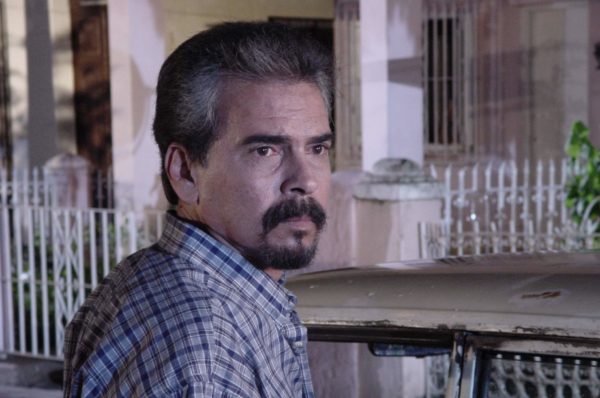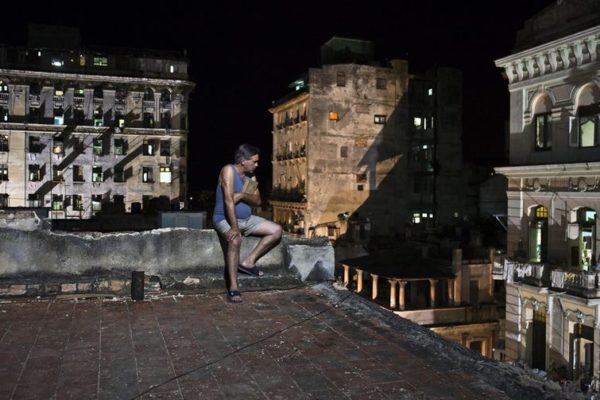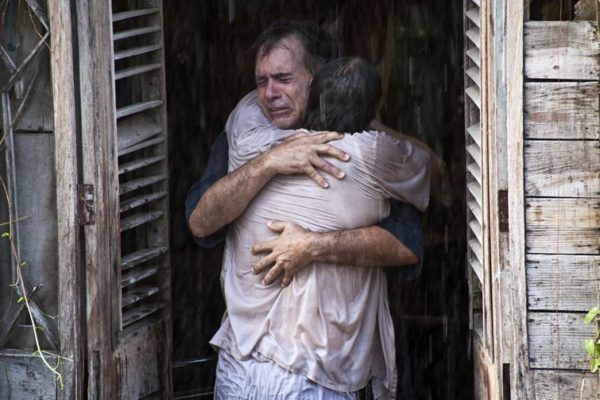The Cuban nation began and developed hand-in-hand with migration, a complex process with a great impact in demographic, cultural, economic and socio-political terms. Therefore, it comes as no surprise that the issue of migration appears in a never-ending list of Cuban movies.
Appearances of the issue were sporadic in Cuban film during the first years of the Cuban Institute of Cinematographic Art and Industry’s (ICAIC) existence. This ended in those first scenes from Memorias del subdesarrollo (Memories of underdevelopment) (1968), when the protagonist bids farewell to his wife and his family, at the airport.
Later, emigration became an appealing issue for Cuban film, especially in the 21st century. It allows filmmakers and scriptwriters to expose the strong correlation between society and the individual, an interrelationship that shapes a character’s desire or decision to go and live in another country. Contemplating the trade-off in terms of uncertainty, growing apart and loss.
Within the wide range of Cuban movies that deal with migration, I will select ten Cuban movies, whose characters suffer the “I-want-to-leave-Cuba” syndrome. These are characters who are completely possessed by an anxiety to break away from a very concrete everyday reality. One that is unsatisfactory in that it does not meet their material, psychological or spiritual needs.
When migration regulations were made more flexible, many Cubans living abroad began traveling back to the island. Likewise, many made extended visits in other countries or took up opportunities to live abroad thanks to work contracts, or marriage with foreigners. The cinematographic stereotype of the emigre as a tragic, torn apart character who leaves their country and culture for good was defused.
However, the tragic spirit that emigres used to have, generally-speaking that is, has now been translated to a character who is suffering an existential crisis with everyday life and the pressing need to find alternatives or different paths. Let’s take a look at ten Cuban movies produced in the past two decades, that center around these characters that long for something different, dissatisfied, tragic and almost always out of touch with their surroundings in their urgent obsession to leave.
-
Nada (2000) “Nothing More”, Juan Carlos Cremata
Perhaps the first character in Cuban film to dare to shout out that they want to leave Cuba is Carla, played by Thais Valdes in the movie Nada. Her name was entered into the lottery to get a visa and permanent residency in the US, and she survives by working at a Post Office where, bored, she puts stamps on letters. Carla is fed up of a life without anything more to live for, and seems to be tired of helping others. Plus, she longs to have her own life, to see her parents again and, maybe, escape the daily grind and complaining, being under surveillance at work, shortages, blackouts…

The emigration issue is at the heart of the Viva Cuba (2006) plot, which was also directed by Cremata. In this movie, he presents a family whose mother, played by Larisa Vega, always explains the reasons she wants to leave Cuba as soon as she can, taking her daughter with her. Nada and Viva Cuba reveal the family and country’s mindset, permanently divided between those who prefer to leave or stay. Those choosing a personal project or continuing to slog for the Revolution’s collective utopia.
-
Balseros (2002) “Rafters”, Carles Bosch and Josep María Domenech
Co-directed by two Spanish journalists, this documentary won international acclaim when it was released. The first part, filmed in Cuba, shows a team of journalists from Catalan TV visiting seven Cubans and their families in 1994, when they decide to leave Cuba on a raft. In this first part, this group of emigre’s pressing needs, desires and dreams are clearly expressed. Months later, the journalists track their characters down at the Guantanamo Bay Naval Base. They reunite with them several years later to ask them about their lives ever since making it to the US.
In addition to being the most complete journalistic coverage we have about the rafters’ crisis, the documentary also talks about whether dreams of prosperity and self-fulfillment were ultimately realized. Dreams that motivated that stampede and great calamities in peoples’ lives. Balseros also marked Film’s take on that crisis in later movies: …en fin, el mar (2003) by Argentinian Jorge Dyszel; the Spanish movie 90 millas (2005, Francisco Rodríguez) and Lucy Molloy’s debut under the title Una noche (2012).
In 2018, Mar afuera and El último balsero were shot in Miami, and the following year, Agosto (Armando Capo) hit the big screen in 2019, telling the story of how a small coastal town seems to disintegrate around a teenager who senses this division in his family, while his friends leave.
-
Suite Habana (2003) “Havana Suite”, Fernando Pérez
Fernando Perez’s movies have always referred, directly or metaphorically, to those who wish to emigrate to other lands. Suite Habana normalizes traveling abroad, when it includes Jorge Luis among its 15 lead characters. He appears first on screen, saying goodbye to his home, his family, and then standing in the middle of the airport or already onboard a plane, after taking one final look at the palm trees that line the landscape.
The movie cuts between the family’s pain caused by one of its members moving away and juxtaposes pictures of everyday life. These include the laundry room at the hospital; the doctor who checks that those distributing food respect hygiene regulations; the special school for the child with Down’s Syndrome; Prado avenue; Suchel’s piston manufacturing factory; the racket of a bulldozer that collects rubble; the pneumatic drill that breaks the ground; the worker pounding a railroad tie; the valve on a pressure cooker; the mortar where spices are ground up; hands covering a grave with a cement slab…
The issue of migration and the legitimacy of emigration, or the fact that everyone carries the burden of their past wherever they go, has been touched upon before, in Fernando Perez’s movies that he made in the ‘90s, such as Hello, Hemingway (in which the protagonist wants to be famous like Hemingway and longs to turn his insignificant life around by getting a grant to study literature in the US); Madagascar, with the daughter first and then the mother, who long to travel, leave work or school behind and see somewhere new, another life that is both better and different; and La vida es silbar, which includes the snail scene on the Malecon, a beautiful symbol of something that travels with their home on their back.
-
Habana Blues (2005) “Havana Blues”, Benito Zambrano

-
Páginas del diario de Mauricio (2005) “Pages from Mauricio’s Diary”, Manuel Pérez

- Personal Belongings (2007), Alejandro Brugues
Ernesto, the protagonist from Brugues’ debut movie, has been trying to leave Cuba for two years, and he’s been going from embassy to embassy trying to get a visa. He lives in his car and all his personal belongings fit into a suitcase. He meets Ana, who lives alone as her family left on a raft, and she decided to stay. Ernesto and Ana fall in love, although they are both aware that they have chosen different paths for the rest of their lives.
Brugues insisted on the migration issue in the final scene of his following movie Juan de los Muertos (2011), when the zombies take over Havana’s streets and survivors from the brigade of brave fighters against the epidemic decide to leave on a raft from the Malecon. Instead of fleeing to Florida, the protagonist returns to take on the lions, that’s to say, the living dead.

-
Habanaver t. a 31 kb/seg (2009), Javier Labrador and Juan Carlos Sánchez.
The documentary uses fictional resources (the script is acted/read as a voice-over by two actresses: Broselianda Hernandez and Cheryl Zaldívar) to present an email exchange between two friends who spent their youth in Havana in the ‘80s, when they were both happy in Cuba, or thought they were.
The disillusioned and pessimistic discourse of the friend who stayed in Cuba appears in the conversation’s subtext. Meanwhile, the camera constructs a parallel in pictures, of that online conversation, and reinforces the frustration and disillusion of the friend that stays in Cuba; but lacks the strength to idealize the island’s present or past, and she only speaks about problems that could turn her into a potential emigre, just like her long-lost friend.
-
Vestido de novia (2014) “Wedding Dress” by Marilyn Solaya, and Santa y Andrés (2017) by Carlos Lechuga.
Both movies present leaving Cuba, at the end of their characters’ dramatic stories, as the only possible solution for homosexuals who never found a peaceful and harmonious place in Cuba where they could live their lives freely and fulfill themselves in any way.
Just like Diego in Fresa y chocolate, who never decided to leave Cuba, but was kicked out instead, the protagonists from both movies have no other choice but to take a raft and try and look for acceptance, or at least tolerance, elsewhere, as they never found it in the island’s harassing and repressive environment. Unlike Fresa y chocolate, when the decision comes suddenly, you see the tragic narrowing down of options in these two movies, until they have no other choice but to leave.
-
El acompañante (2016) “The Companion”, Pavel Giroud
This movie is set in Havana, in 1989, when HIV patients were admitted by force into the Los Cocos Hospital, and they could only leave on the weekend if they were accompanied by somebody who would take responsibility for their actions.
The movie tells the story of a gradual friendship between one of the patients, Daniel, a former internationalist soldier, and his jealous guard, Horacio, a boxer who has been suspended temporarily.
In spite of the differences and making up between Daniel and Horacio (played superbly by Armando Miguel Gomez and Yotuel Romero), both are trapped in a cycle of exclusion and punishment. The script traces the precise image of Daniel, a man who has been made to live a prisoner and so he escapes whenever he can, even preparing an illegal departure from the country. His attempt to emigrate is the final gesture of a beautiful character, an ardent lover of freedom, ready to fight for it no matter what the cost.
-
Últimos días en La Habana (2016) “Last Days in Havana, Fernando Perez












Comments
We moderate comments on this site. If you want to know more details, read our Privacy Policy
Your email address will not be published. Mandatory fields are marked with *